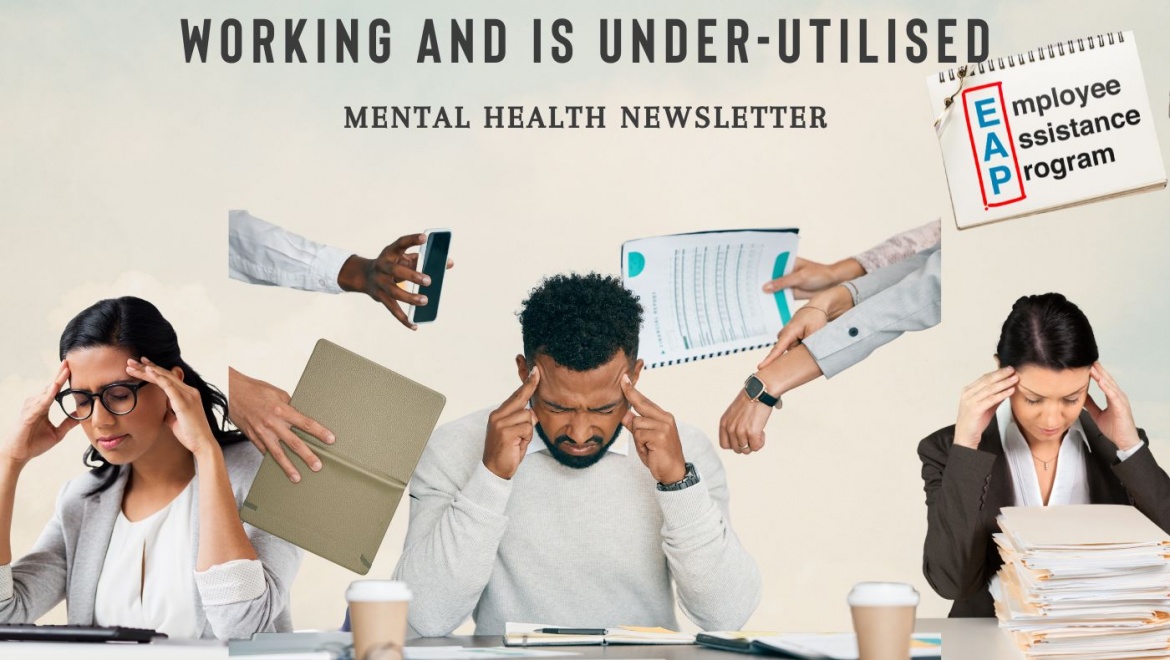Wellbeing is not a fixed endpoint or about reaching a specific state of perfection but rather an on-going journey. How much an Organisation understands and values this determines how actively it will engage in the processes that promote mental health, by employing relevant and useful EAPs – Employee Assistance Programs.
An EAP is a workplace program that is designed to address personal challenges of employees which could impact their job performance negatively. Well-crafted EAPs offer short-term counseling services along with integrated wellbeing programs tailored to address specific issues. We integrate this knowledge in our EAPs and many organisations have benefited from us.
Typically, employers may fall under one of the three as far as EAP implementations are concerned:
- Those who proactively engage EAPs, investigate their outcomes and routinely promote engagement in employees
- Those who engage EAP services but have no consistent strategies for employee engagement to tackle underutilization and stigma, failing to address its struggle points after hiring
- Those who don’t have an EAP culture, so they don’t think it’s necessary to review or hire for their organisation
I have often maintained from my experience of 15 years as a mental health professional and a corporate wellbeing consultant, that just because an existing EAP is not seeing engagement does not mean that there are no mental health issues in an Organisation. Often, there are multiple reasons why an EAP may not be working or is underutilised, cited below:
- It is perceived solely as ‘crisis support’ by employees, failing to dismantle stigma and go deeper into personality development and Emotional Intelligence (EI) management.
- EAPs not promoted adequately as an employee benefit program separate from performance assessments, where people will not be evaluated or judged formally based on what they share.
- Service not being utilised by senior management, who can act as thought leaders by sharing their own experiences.
- Absence of a structured referral system in an existing EAP for managers, contributing to the lack of flow of employees to the program.
- Lack of evidence-based interventions – when EAP counsellors end up offering a concoction of services ‘in vogue’, sometimes making EAPs sound ‘fashionable’, diluting it’s effectivity.
- For instance, in India, the sudden promotion of mindfulness sessions in EAPs post-COVID lacked awareness of their limitations. While mindfulness enhances present awareness and relaxation in controlled environments, it proved ineffective in addressing stressors directly outside of meditation settings when employees went back to their triggers. Employees continued to experience anxiety when confronted with persistent external challenges, highlighting the need for EAP interventions to be more structured and specialised in one-to-one mental healthcare.
- Additionally, when EAPs haphazardly combined mindfulness with positive affirmations or used “reframing of thoughts” as a primary strategy without dissipating negative thinking habits in concrete ways, it resulted in suppression of emotions, dissociation for some, even inhibiting sleep, rather than resolving underlying emotional issues.
- These gaps in treatment were brought to us by multiple clients who did not feel confident to approach their own Company EAPs as a result of this. Organizations can benefit from their own EAP budgeting, if they ensure that interventions are aligned with researched evidence-based practices and are needs-based rather than relying on fleeting trends.
- Extended wait-times for employees seeking help between contact and assistance provided by a service, leading to frustration and reduced utilization.
- Inconsistent quality of service, unable to adequately cater to the diverse needs of the workforce.
- Absence of a clear needs-based hybrid integrated approach in EAP, where counseling is complemented by other lifeskills interventions. We specialise in this with the use of Rational Emotive Behavior Therapy (REBT) principles – an evidence based model in behavioural science from the school of cognitive psychology, with international accreditation of professionals using ethical frameworks in treatment modality, equipped to provide such integrated approaches.
- Cost-cutting on quality in organisations often compromising on the wellbeing of employees. There are many providers, yes, but they may not necessarily be effective. A simple review of the services, obtaining employee feedbacks can help to tweak changes and minimize losses for a Company that is paying out.
- Cultural barriers in organisations – those Companies that valorise long working hours discourage employees from seeking support for fear of disclosure or judgement if they sought help.
- HR teams not leveraging their influence to push for impactful programs beyond budget considerations, building a compelling case for their implementation.
AN EFFECTIVE EAP DESIGN CAN HELP MITIGATE:
- Stress and burnout from excessive workload and unrealistic expectations
- Identify toxic environments and workplace bullying or harassment
- Address job insecurity amid layoffs which tend to erode morale
- Address isolation in remote work, leading to detachment and decreased motivation
- Improve work relationships resulting in strained interactions and heightened stress
- Address self-doubt that employees often experience about their capabilities
- Raise Emotional Intelligence (EI) at both individual and group levels
TO MAXIMISE EAP EFFECTIVENESS, ORGANISATIONS CAN BENEFIT IF THEY:
- Make efforts to understand their employees’ unique needs and duly acknowledge them without minimising
- Prioritize communication to increase awareness
- Look for effective tailor-made service options with easy accessibility, meeting specific needs and not just generic EAPs
- Train managers to support EAP utilization
- Address cultural barriers in the workplace environment
- Promote employee well-being and work-life balance
In conclusion, finding high-quality EAPs that support employee mental health and provide a measurable ROI isn’t easy. But we’re here to assist you in navigating this journey and help assess it. If you found this article beneficial or relatable and are interested in learning more about how we can help, please reach out to us on this Contact Form to arrange a meeting today.
If you would like to be added to our weekly Mental Health Newsletter group, please send us a Whatsapp to the number below.
About the Writer:
Rajita Ramachandram
Founder & Head Psychotherapist (practicing for 15 years)
Corporate Wellbeing Consultant,
Emotional Intelligence Speaker,
Associate Fellow of Albert Ellis Institute, NY, USA,
AltMindShift.
+91-9967035943


